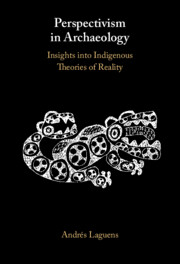115 results
Inca human sacrifice and sacred pilgrimages: spatial analysis of sites on the Chachani and Pichu Pichu volcanoes
-
- Journal:
- Antiquity , First View
- Published online by Cambridge University Press:
- 27 January 2025, pp. 1-9
-
- Article
-
- You have access
- Open access
- HTML
- Export citation
3 - An Ecology of Payments: Taxes, Cuotas, and Fees in Highland Bolivia
-
-
- Book:
- Anthropology and Tax
- Published online:
- 12 December 2024
- Print publication:
- 19 December 2024, pp 95-112
-
- Chapter
-
- You have access
- Open access
- HTML
- Export citation
3 - The Tradition of the Apotheosis in the Andes
-
- Book:
- Fallen From Heaven
- Published online:
- 12 December 2024
- Print publication:
- 19 December 2024, pp 124-172
-
- Chapter
- Export citation
The structural transformation of Ollantaytambo's Inka ecology under Spanish rule
-
- Article
-
- You have access
- Open access
- HTML
- Export citation
A review of the ecology and conservation of the Andean Flamingo Phoenicoparrus andinus and Puna Flamingo P. jamesi in South America
-
- Journal:
- Bird Conservation International / Volume 34 / 2024
- Published online by Cambridge University Press:
- 28 November 2024, e37
-
- Article
-
- You have access
- HTML
- Export citation
Geoglyphs in the Andean Central Coast: combining digital and traditional survey techniques
-
- Article
-
- You have access
- Open access
- HTML
- Export citation
Beyond Inca roads: the Redes Andinas project explores complex palimpsests of Andean road networks
-
- Article
-
- You have access
- Open access
- HTML
- Export citation
How Can Data Science Contribute to Understanding the Khipu Code?
-
- Journal:
- Latin American Antiquity , First View
- Published online by Cambridge University Press:
- 06 May 2024, pp. 1-20
-
- Article
-
- You have access
- HTML
- Export citation
A Deposit of Silver Aquillas from the Site of Purun Llacta de Soloco, Amazonas, Peru
-
- Journal:
- Latin American Antiquity / Volume 35 / Issue 4 / December 2024
- Published online by Cambridge University Press:
- 16 April 2024, pp. 1045-1051
- Print publication:
- December 2024
-
- Article
-
- You have access
- Open access
- HTML
- Export citation

Perspectivism in Archaeology
- Insights into Indigenous Theories of Reality
-
- Published online:
- 01 February 2024
- Print publication:
- 08 February 2024
Managing pastoral landscapes: remote survey of herding infrastructure in Huancavelica, Peru
-
- Article
-
- You have access
- Open access
- HTML
- Export citation
Eyes of the machine: AI-assisted satellite archaeological survey in the Andes
-
- Article
-
- You have access
- Open access
- HTML
- Export citation
A new view of hillforts in the Andes: expanding coverage with systematic imagery survey
-
- Article
-
- You have access
- Open access
- HTML
- Export citation
Augmenting field data with archaeological imagery survey: mapping hilltop fortifications on the north coast of Peru
-
- Article
-
- You have access
- Open access
- HTML
- Export citation
Mikhuspa Ukyaspa Ima Tinkuyku: Food and Drinks as Mediators of Encounters in Andean Festivals
-
- Journal:
- Latin American Research Review / Volume 59 / Issue 1 / March 2024
- Published online by Cambridge University Press:
- 20 October 2023, pp. 105-122
-
- Article
-
- You have access
- Open access
- HTML
- Export citation
Starch Analyses on Culinary Equipment from Chavin de Huantar
-
- Journal:
- Latin American Antiquity / Volume 35 / Issue 3 / September 2024
- Published online by Cambridge University Press:
- 18 August 2023, pp. 779-791
- Print publication:
- September 2024
-
- Article
-
- You have access
- HTML
- Export citation
9 - The Alpine Avifauna of Tropical Mountains
-
-
- Book:
- Ecology and Conservation of Mountain Birds
- Published online:
- 30 June 2023
- Print publication:
- 20 July 2023, pp 336-371
-
- Chapter
- Export citation
Seed anatomy and dormancy class of 14 species from the Andean montane forests of Colombia
-
- Journal:
- Seed Science Research / Volume 33 / Issue 2 / June 2023
- Published online by Cambridge University Press:
- 27 June 2023, pp. 85-100
-
- Article
- Export citation
MODELING LONG-TERM HUMAN POPULATION DYNAMICS USING KERNEL DENSITY ANALYSIS OF 14C DATA IN THE ATACAMA DESERT (18º–21ºS)
-
- Journal:
- Radiocarbon / Volume 65 / Issue 3 / June 2023
- Published online by Cambridge University Press:
- 13 April 2023, pp. 665-679
- Print publication:
- June 2023
-
- Article
-
- You have access
- Open access
- HTML
- Export citation


